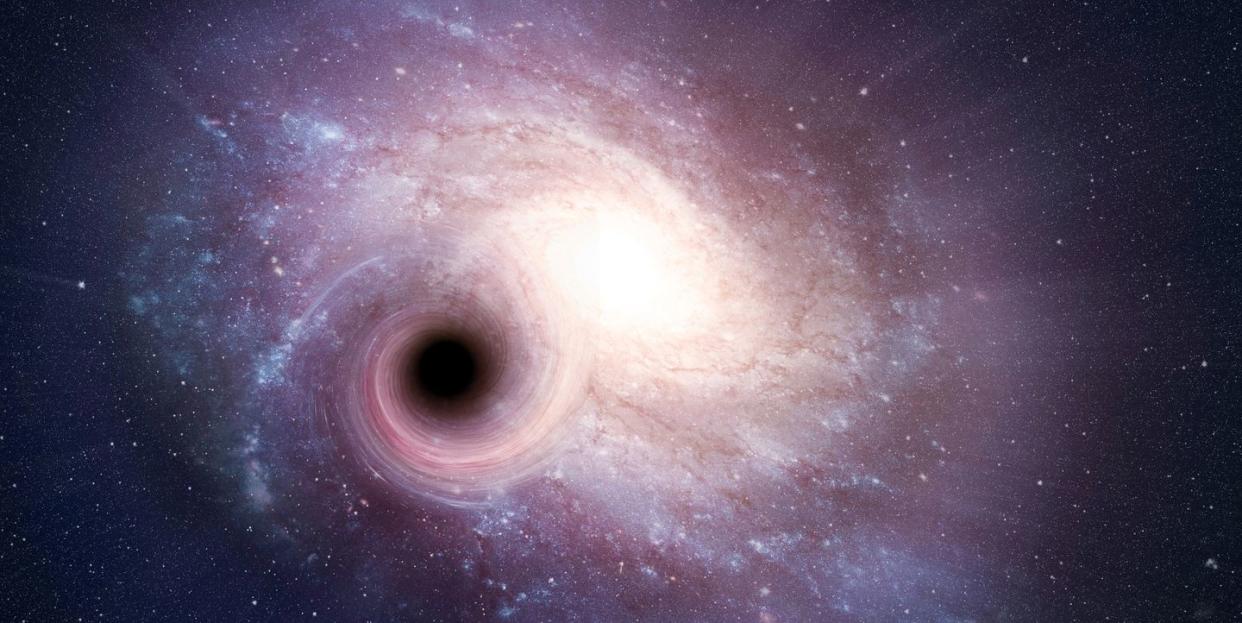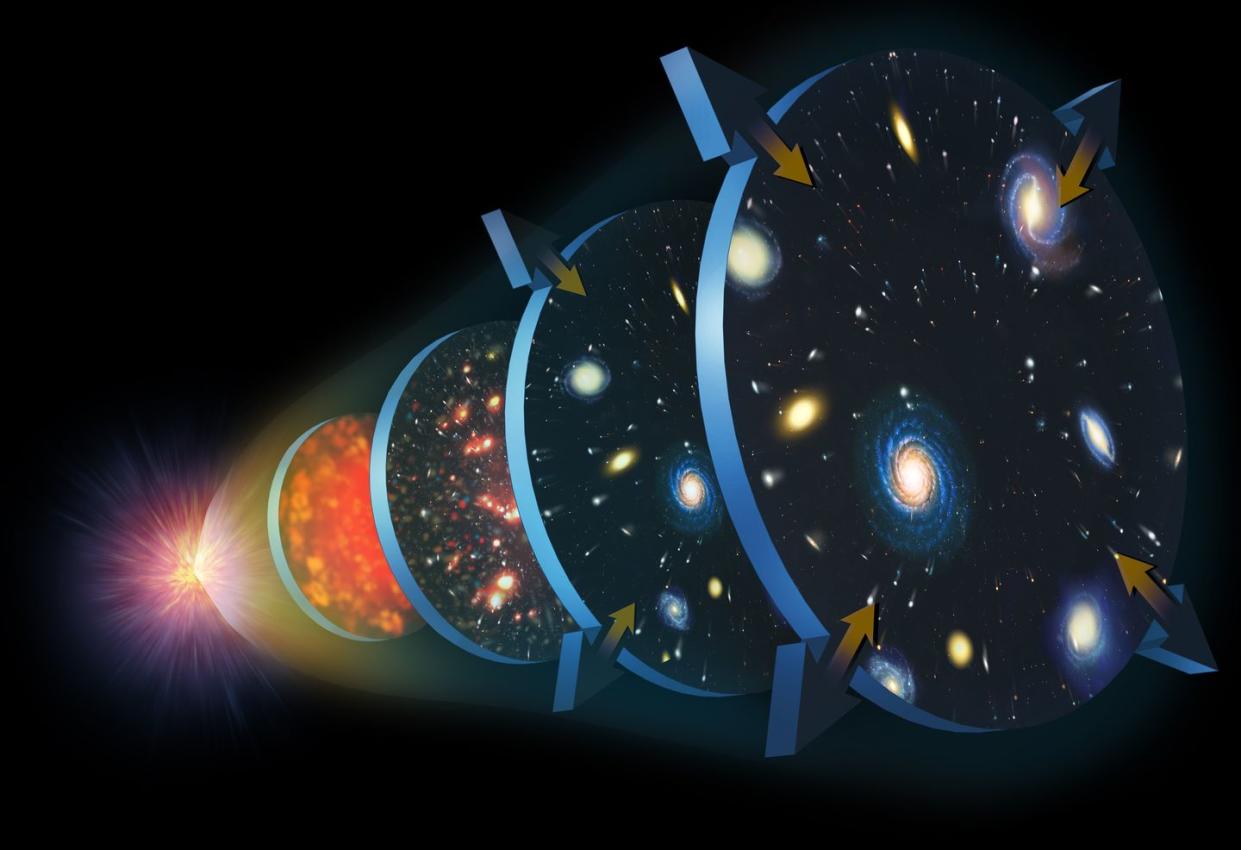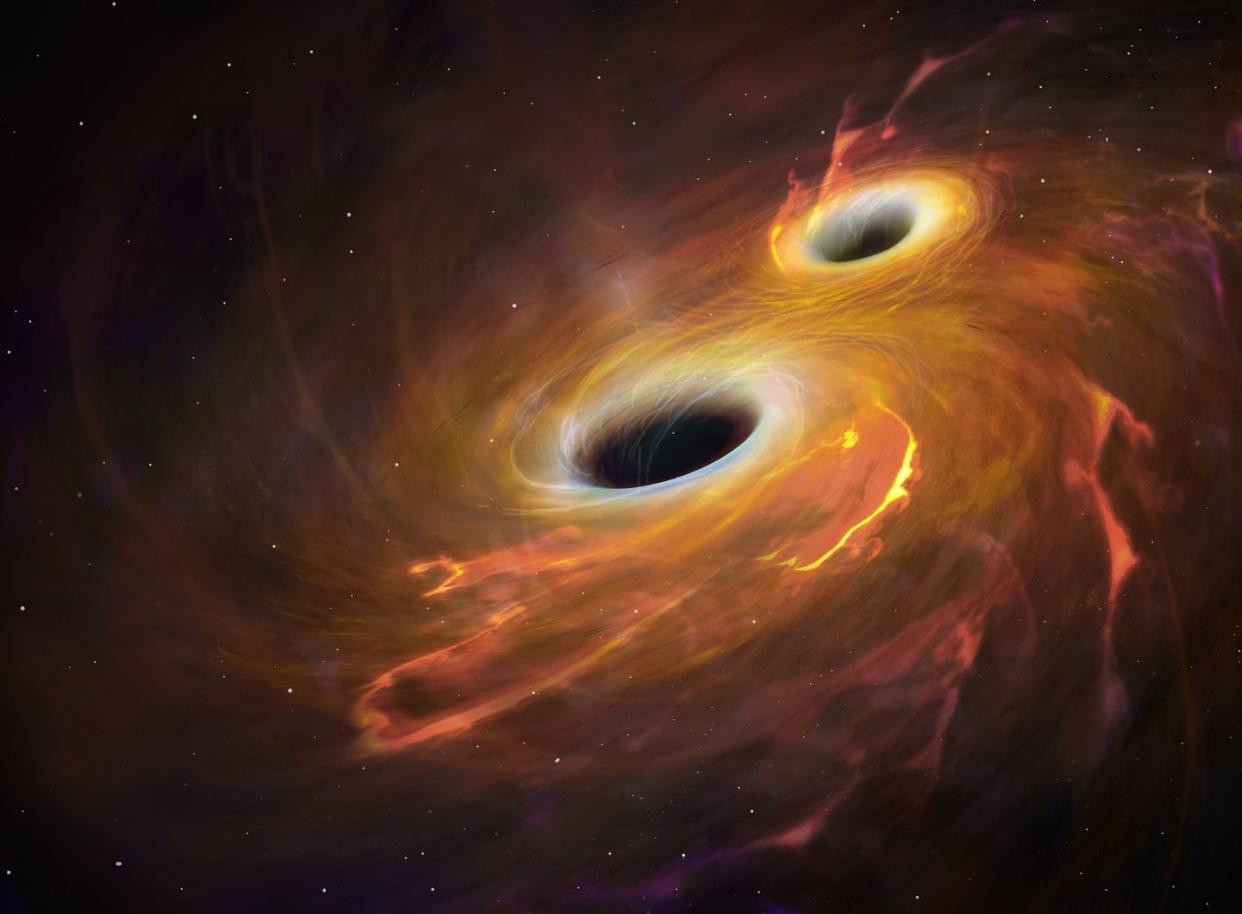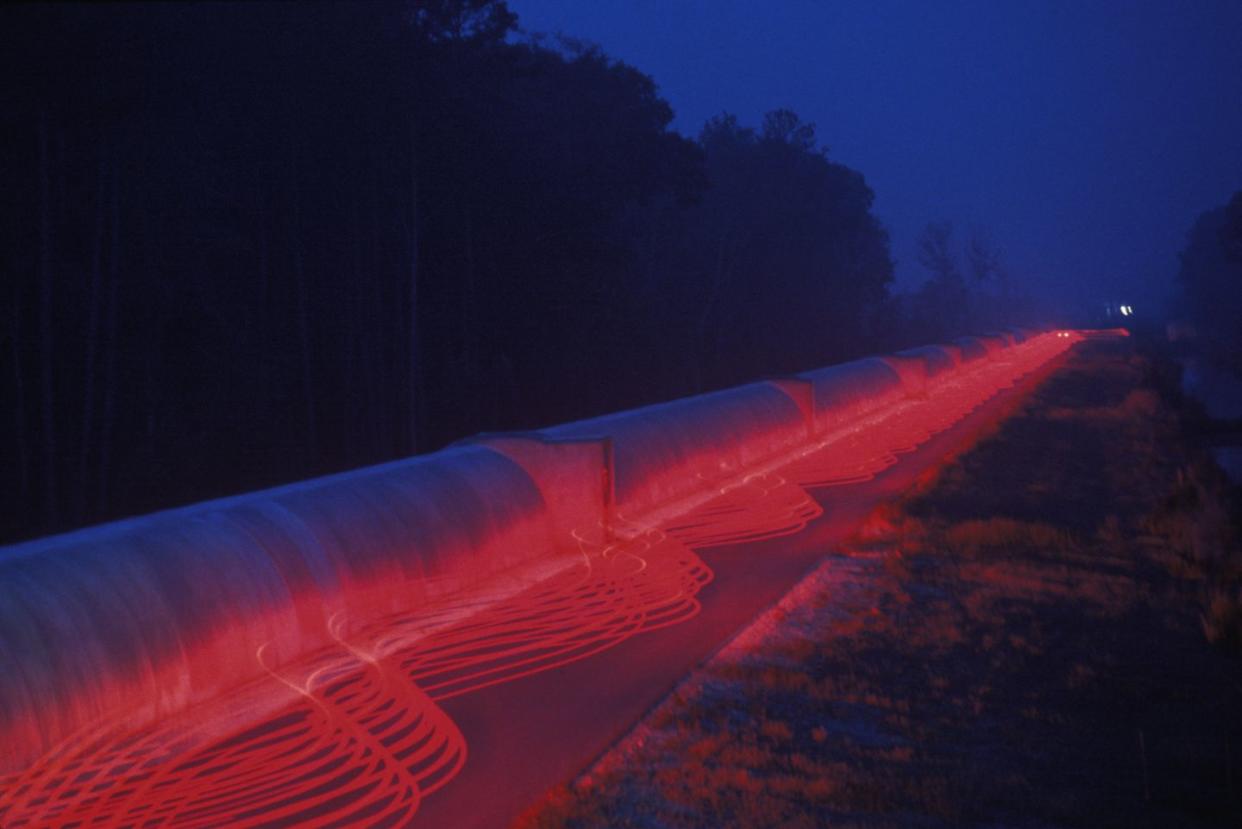Black Holes Could Give Us Clues About Dark Energy (And the Expanding Universe)


New research suggests that using gravitational waves from the collisions of distant black holes could solve one of the most troubling aspects of cosmology — the rate of expansion of the universe, known as the Hubble constant.
There are two standard ways of measuring the Hubble constant.
The “global method” involves the use of the cosmic microwave background (CMB) — fossil radiation left over from the Big Bang that uniformly fills the universe — and reveals the expansion of the universe at earlier times in history. On a local scale, type Ia supernovas—also known as “standard candles” due to their uniform energy output—are used to measure the Hubble constant and the more recent expansion rate of the universe.
🕳 Black holes are confusing. We’ll help you make sense of it all—join Pop Mech Pro.
The problem? Using different methods for measuring the Hubble constant delivers different results. The value of the Hubble constant provided by standard candles is much higher than the value CMB observations have given.
This sounds like it should have a simple solution. One method must be giving an inaccurate result, surely? But, that isn’t the case. Perfecting these methods hasn’t closed this gap, but has instead further widened the chasm. This problem has become known as the “Hubble tension.”
Astrophysicists from the University of Chicago suggest a new method for measuring the Hubble constant and the expansion rate of the universe, with the hope it could resolve the Hubble tension. This new technique doesn’t use the cosmic microwave background or supernovas, but instead capitalizes on gravitational waves launched by distant black holes as they clash together.
The expansion of the universe has always been concerning to physicists, especially since it was discovered that rather than slowing down, it is accelerating. The mysterious force that is driving this acceleration has been given the placeholder name “dark energy.”
“If the matter in the universe is finite, physicists expected that its expansion would eventually stop and the universe would re-collapse,” astrophysicist Luz Ángela García of the Universidad ECCI in Bogotá, Colombia, tells Popular Mechanics. “In 1998, two independent groups that used two sets of supernova type Ia found that the universe was not only expanding, but it was doing so at an accelerated rate.”
She adds that this means other galaxies are speeding up their movement away from us ... and each other. And the further they are away, the more rapidly they recede.
“In the more recent era of cosmic history, the universe’s expansion is accelerating,” University of Geneva cosmologist, Lucas Lombriser, tells Popular Mechanics. “If we measure the current expansion rate using observations of closer objects like supernovas, therefore, testing the more recent universe, we end up with a Hubble constant that is significantly larger than its counterpart inferred from the early universe and the CMB.
“The tension between the two measurements is now at a significance level that can no longer be ignored.”

Why the Expanding Universe Is a Growing Problem

To picture why the accelerating expansion of the universe is so troubling, picture a mundane and everyday analogy: pushing a child on a normal playground swing.
As time from the initial single push passes, the child’s swing reaches lower points. Then as the swing comes to a stop, it suddenly begins swinging again, without a push, reaching higher and higher points.
That’s similar to the universe slowing after its period of early rapid expansion — which we call the “Big Bang”— only to begin rapidly expanding again and speeding up.
“This accelerating expansion is only predicted by our model of gravity if there is something that was overtaking the strength of gravity at large scales and causing a negative pressure,” García says. “That is dark energy.”
Dark energy can’t be ignored because to keep the expansion of the universe speeding up, it has to account for at least 68 percent of all of the matter and energy in the universe.
“The community is puzzled by the results. We can either claim the techniques could be further refined to get closer values for the Hubble constant, or we could improve the models we use to calibrate the observations,” García adds. “There is a third possibility that could be considered — a variable Hubble rate at different epochs of the universe, implying that the contribution of dark energy is not a constant, but it varies over time.”
And one way of looking back in time is by studying gravitational waves launched by distant events.

Black Holes as “Standard Sirens” to Measure the Hubble Constant
When black holes collide, they merge to produce an even larger black hole, but these events have another effect on the universe; the merging of black holes is so powerful that the event sends ripples out through the very fabric of spacetime as gravitational waves.
Sensitive and massive laser interferometers like the U.S-based Laser Interferometer Gravitational-Wave Observatory (LIGO), and the Italian version , Virgo, can measure these ripples here on Earth.
Just like observing light from a distant source shows objects as they were when that light left them — so a star three light years away is seen as it was three years ago, and so on — the observation of gravitational waves reveals events and objects that occurred in the universe’s distant past.
In a paper published last month in the journal Physical Review Letters, astrophysicists Daniel Holz and Jose María Ezquiaga suggest that these gravitational waves from colliding black holes could be used to test if the Hubble constant was the same in the universe’s relative infancy.
✅ Black Hole Central
Solving the Hawking Paradox: What Happens When Black Holes Die?
Glowing Gas: Milky Way’s Black Hole Captured in First-Ever Image
Astronomers Finally Know How Black Holes ‘Spaghettify’ Stars
Black Holes Are Proof We’re Living in a Holographic Universe
“When thinking about ways of using gravitational waves to measure the expansion of the universe, colliding black holes are advantageous over binary neutron stars because their current detection rate is much higher and they can be observed further away,” NASA Einstein Fellow at the University of Chicago, Ezquiaga, tells Popular Mechanics. “In other words, they allow us to probe the rate further back in time allowing us to measure the Hubble constant and also the abundance of dark energy and dark matter.”
This would hinge on researchers being able to determine how the expansion rate of the universe affects gravitational waves—and changes them—before they are measured here on Earth. And this should in turn reveal if the expansion rate of the universe is changing over great distances and thus time.
“Different expansion rates affect both the amplitude of the gravitational waves, in other words, how ‘loud or quiet’ they are, and the merger rates, because the volume of the universe also changes,” Ezquiaga says.
The advantage of this method is that, though it depends on non-local events, by observing black holes closer to home, the researchers suggest that cosmologists could calibrate their measurements.

“Local black holes allow you to have a census of the typical masses of binary black holes. Then, you can look back in time to see if black holes that merged earlier have the same spectrum,” Ezquiaga adds. “Changes in the cosmological model should only shift the detected masses. By comparing the shift between both spectrums, the one in the local universe and the one back in time, one can learn how much the universe has expanded.”
That means this technique to measure the expansion rate of the universe and define the Hubble constant could then shed light on a problem that has troubled researchers for decades without relying on troubling existing methodologies.
Both García and Lombriser, however, have their own ideas that could explain where the disparity in the Hubble constant comes from.

Looking Back in Time (And Across Space) to Resolve the Hubble Tension
García has worked on a so-called “Early Dark Energy” (EDE) model which suggests that dark energy was a factor in the universe before it began its domination over gravity, leaving no trace on the cosmic microwave background, hence why measurements of the Hubble constant with this fossil radiation yields a small value.
“EDE models are theoretical prescriptions we have explored recently to describe a dark energy component whose energy is not constant over time,” García says.
These kinds of models allow dark energy to vary with distance. Thus, the expansion rate would be impacted by a variable energy density from the dark energy.
“The inclusion of early dark energy could explain why we are measuring different values of the Hubble constant at early and late times,” García explains. “This is because early dark energy would change the expansion rate before the time when the CMB is observed and then cease its effect leaving a Hubble constant that we detect with the local universe standard candles when the structure has long evolved.”
Meanwhile, Lombriser has an idea that involves changes across space, rather than across time.
He thinks that our local universe — the Milky Way and surrounding galaxies — may be in a pocket of low density within the universe. Calling this pocket a “Hubble Bubble,” Lombriser says that the consequence would be the local space expanding more rapidly than the rest of the universe in the dense region outside of the bubble.
That would explain why looking at close-by supernovas results in a larger value than that delivered by distant measurements of the CMB yields, thus resolving the Hubble tension.

“The fact that the ‘conformal’ ‘Hubble Bubble’ does not invoke any new physics is an appealing feature that invites for a closer inspection,” Lombriser says. “One option to test this would be to resolve the CMB temperature in our very nearby cosmic structure to test for a drop to a lower temperature locally.”
If the use of gravitational waves to measure the Hubble constant is to resolve the Hubble tension, instruments like LIGO will need major sensitivity upgrades to see ripples in spacetime from more distant collisions.
García isn’t necessarily concerned about the Hubble tension if it can’t soon be resolved. Instead, she sees it as an opportunity to test the limits of physics.
“Future experiments focused on the nature of dark energy and the large-scale structure of the universe will have a huge impact on how we settle this crisis in cosmology,” she concluded. “But, if the tension persists, we will have to think harder about how gravity works on other scales, and that’s pretty exciting!”
You Might Also Like
